Shire horses: Bring in the heavyweights
England’s past might have been ‘borne on his back’, but now, thanks to a rediscovered appreciation of his delightful temperament and eco credentials, the future of the Shire horse looks brighter than it has for decades, says Julie Harding
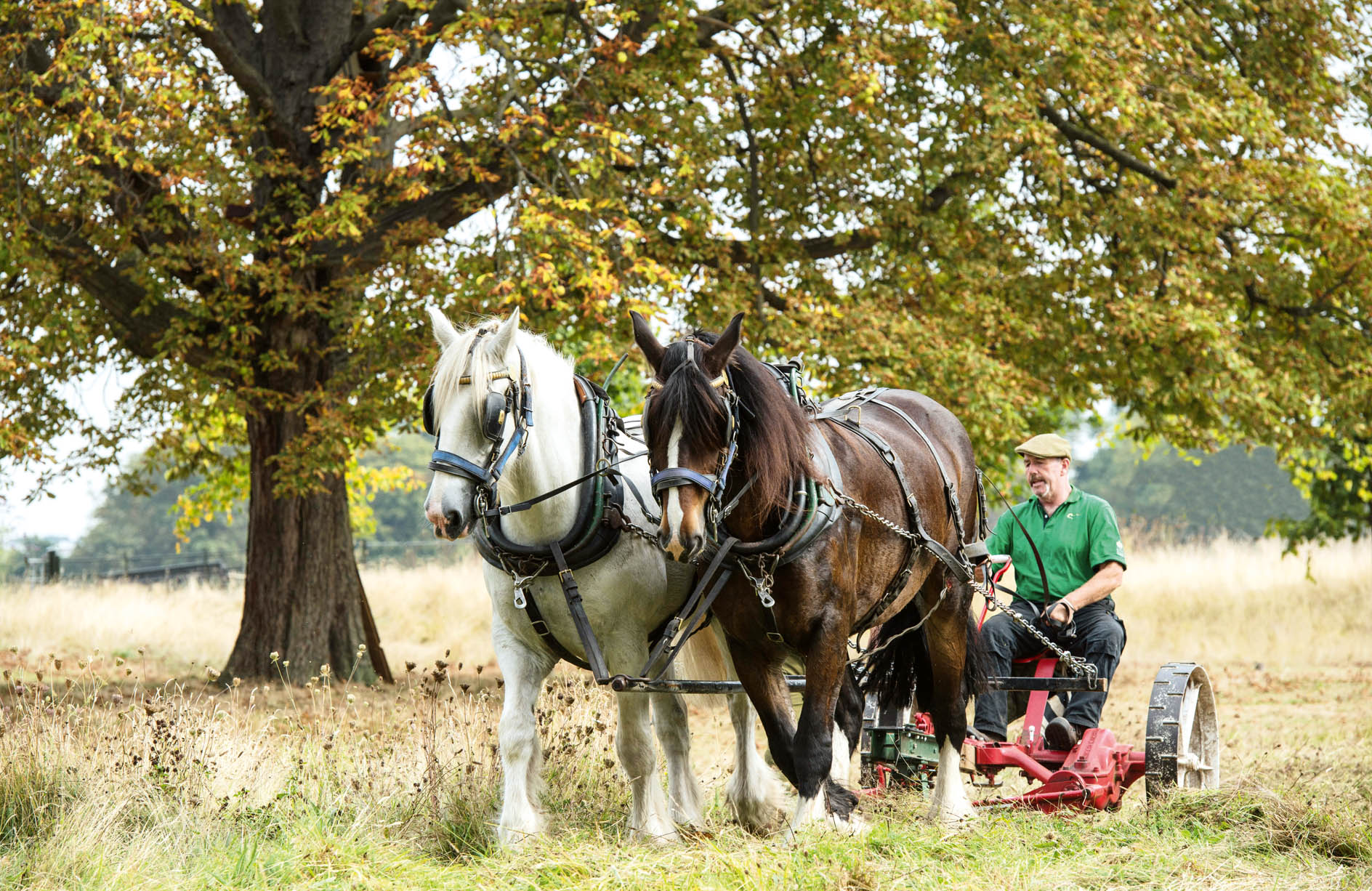

The hitch cart sways hither and thither, every depression and mound prompting it to lurch like a slow-motion fairground ride. The nochalant walk of the two bay Shire horses in front belies the intensity of their effort to propel both cart and attached hefty metal bracken-basher forward. At corners, the trace chains on the Amish harness jangle; the metal shaft between the two beasts clanks loudly. Two short, but full black tails flick at the horse flies that proliferate, hover and bite on a day of high humidity in London’s Richmond Park.
Head horseman Edward MacDowell is the virtuoso in charge of propulsion, steering and the crushing of acres of bracken within this Royal Park, a job that inhibits the unchecked spread of these tall, coarse ferns in the lowland acid grassland Site of Special Scientific Interest. He keeps the lightest touch on the reins, which he flicks gently against flanks, all the while offering vocal encouragement: ‘Come on. Let’s go boys. Up, up.’
‘They’re going at their own speed. I’m not really pushing them — I wouldn’t on a hot day like this,’ explains Mr MacDowell, who has been working the steady 14-year-old Forest Nicodemus (known as Joey) and his six-year-old sidekick William, both thickset 17.2hh equines with strong backs, deep shoulders and powerful legs (the perfect conformation for toil), since 7.30am. ‘I’ll probably do another 20 minutes,’ he adds, as the time edges towards midday. ‘Of course, traditionally, on farms these horses would work 12 hours a day.’
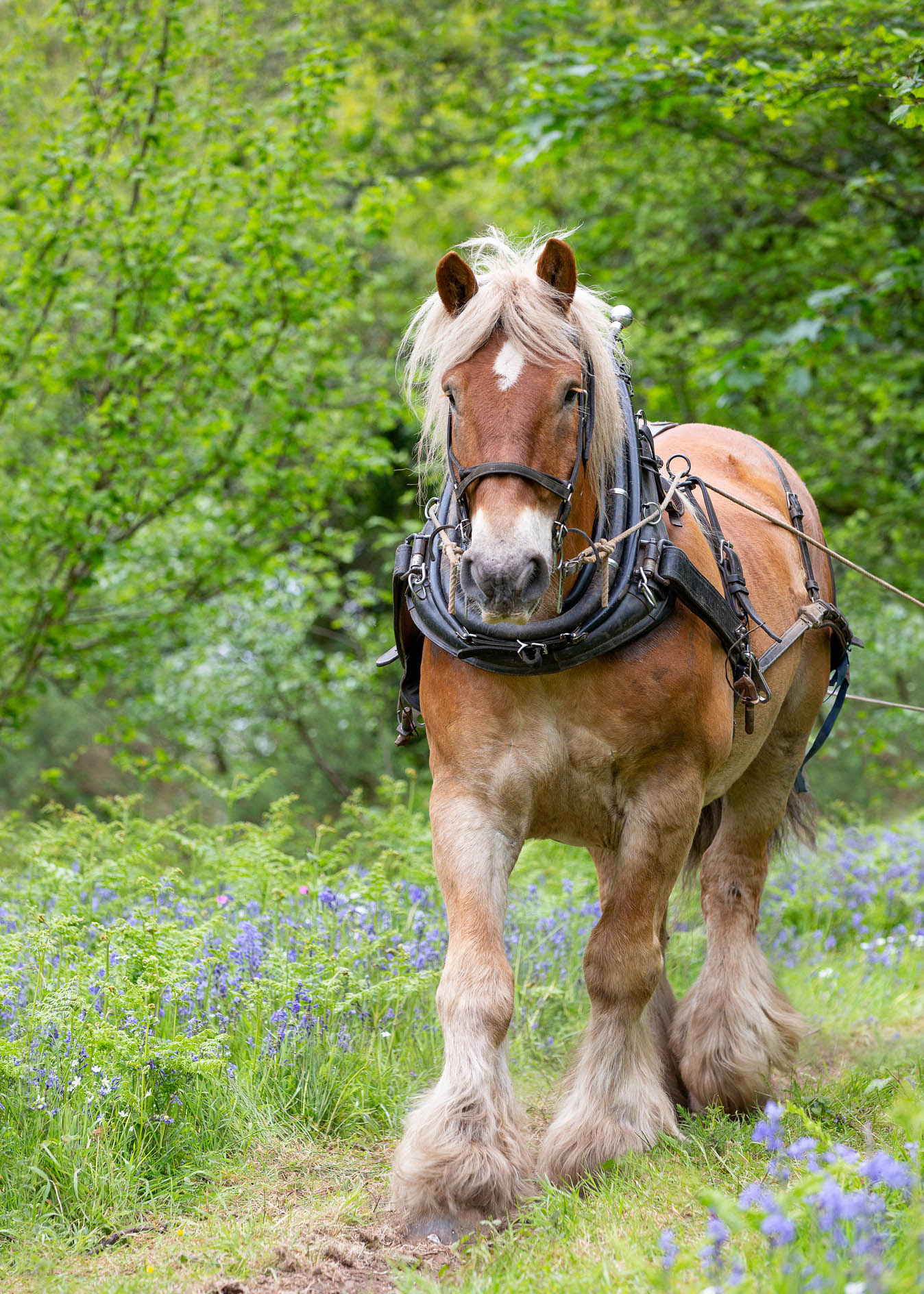
Dog walkers stop and stare, nonplussed at this unusual sight in 21st-century Britain, only eight miles (as the crow flies) from central London. Rewind the clock a century, however, and Shires and other heavy-horse breeds were ubiquitous as they laboured ceaselessly in the fields. They can be construed as the ‘grace… laced with muscle, and strength by gentleness confined’ of Ronald Duncan’s poignant poem The Horse, which goes on to confirm that ‘England’s past has been borne on his back. All our history is his industry’.
Registered Shire horses numbered some 200,000 in the early 20th century, but the harnessing of mechanical horsepower under a tractor bonnet beguiled beleaguered and worn farmers and no sooner had the Massey Ferguson or Fordson arrived on the drive than the stables emptied. Shire populations plummeted with the 1950s, when only a dozen foals a year were registered, their nadir.
Since then, small-scale breeders have worked tirelessly to save these genial goliaths from the void of extinction. Now, too, in these more environmentally conscious times, landowners and groundworkers have cottoned on to the benefits of hooves — albeit large ones — on fragile soil structures, compared with giant, compacting machinery tyres.
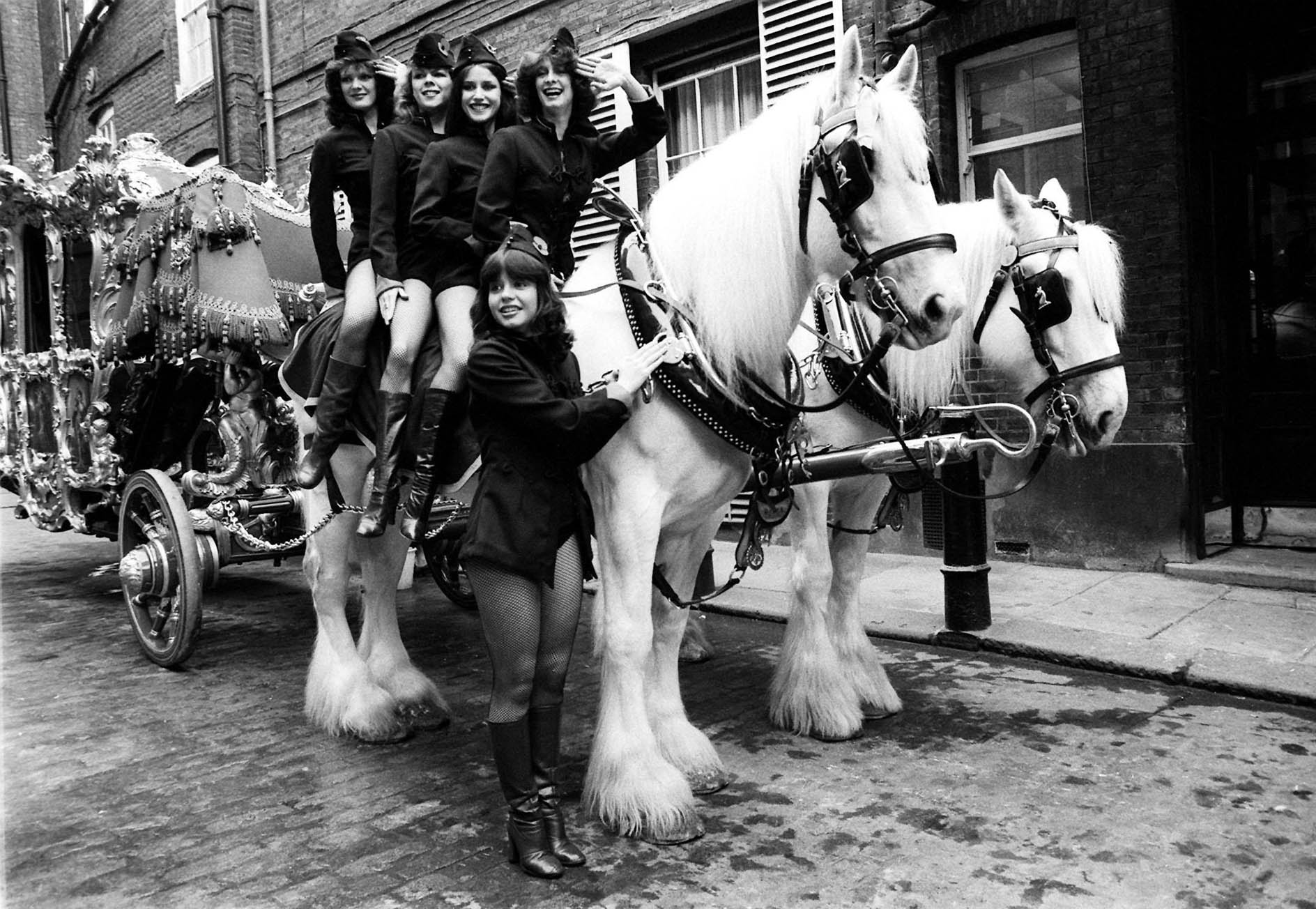
With this in mind, Richmond isn’t the only Royal Park to see Shires in action. Operation Centaur — which owns William and Joey, as well as 13 other Shires, and has the mantra to ‘keep the art of working with rare-breed heavy horses alive’ — also manages wildflowers via harrowing, seeding, rolling and mowing in Hyde Park and Kensington Gardens. In Green Park and at Kensington Palace, the Coronation meadow and wildflower meadow respectively are mown; in Bushy Park, as well as in Richmond, verges are mown, bracken rolled, rides harrowed and forestry work undertaken. These same Shires also work at a few National Trust and English Heritage sites and for various councils, including Wandsworth and Lambeth.
Exquisite houses, the beauty of Nature, and how to get the most from your life, straight to your inbox.
‘It makes sense to use horses for certain jobs. Since we began managing the wildflowers, for example, we’ve seen increased plant diversity,’ says Andreas Liefooghe, founding director of Operation Centaur and a psychologist who has also used Shires in therapy work for clinical mental-health conditions and with challenged schoolchildren and prisoners.
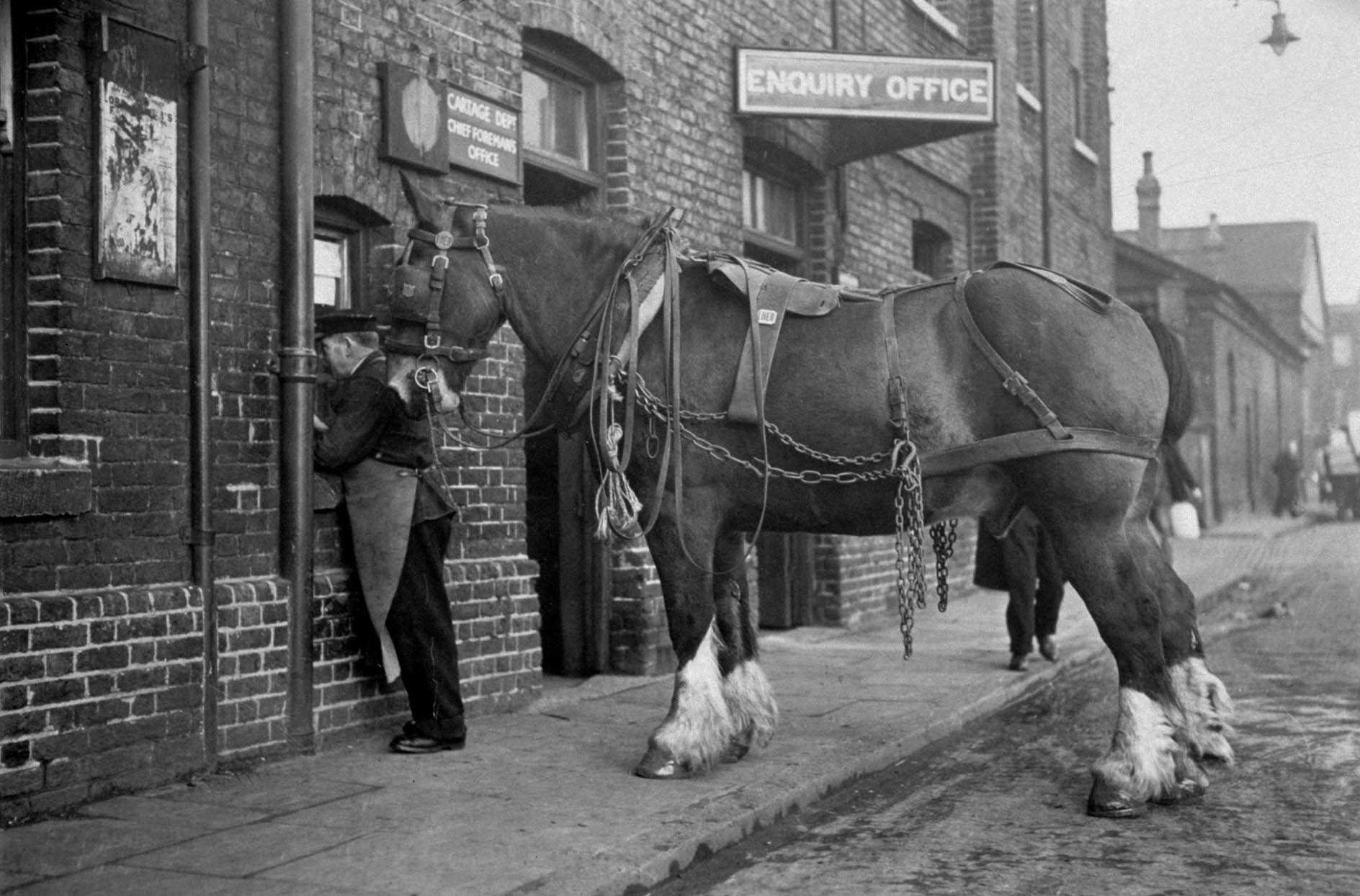
Claire Bodsworth recently set up Siedi Shires on her parents’ west Wales smallholding and is now aiming to breed pure foals using her six-year-old Shire mare, Dothan Bella, and her stallion, the five-year-old, 18.1hh Milnerfields Jack (stable name Fred), which she also rides and uses to chain-harrow the fields and log in the five acres of woodland. ‘Fred’s a massive softie and he’s also a great work horse,’ she says of the white-faced, black equine. ‘He’s desperate to please and always tries his hardest.’ Miss Bodsworth, a former yard manager for Huw Murphy at the Dyfed Shire Horse Farm, started Fred’s training by long-reining him, then attaching a tyre to his harness and working him for 15 minutes each day so that the feel and sound of something dragging behind became second nature.
‘Getting a horse used to work can take a week or six weeks, depending on the individual. I’ll also work them for an hour or two each day, rather than for hours over one day,’ she advises. ‘Getting them to harrow or plough in straight lines is something that comes with practice. When I first put Fred in the harrows, he’ll be a bit jumpy for a few seconds and then he’ll settle right into it.
‘Working a horse in a field is a true otherworldly experience,’ Miss Bodsworth continues. ‘It’s like stepping back in time and it involves a re-connection with you and the horse — a true partnership.’ A delivery driver for Tesco, Miss Bodsworth is something of a rarity in the world of Shires. She’s young — 31 — and female, when the vast majority of breeders are male and edging towards (or beyond) retirement age.
‘As so many breeders are older, all of their knowledge and experience goes with them when they give up or pass away,’ reflects Angela Whiteway, stud-book coordinator at the Shire Horse Society (www.shire-horse.org.uk). ‘That’s why education to encourage new people to take on Shires is so vital.’
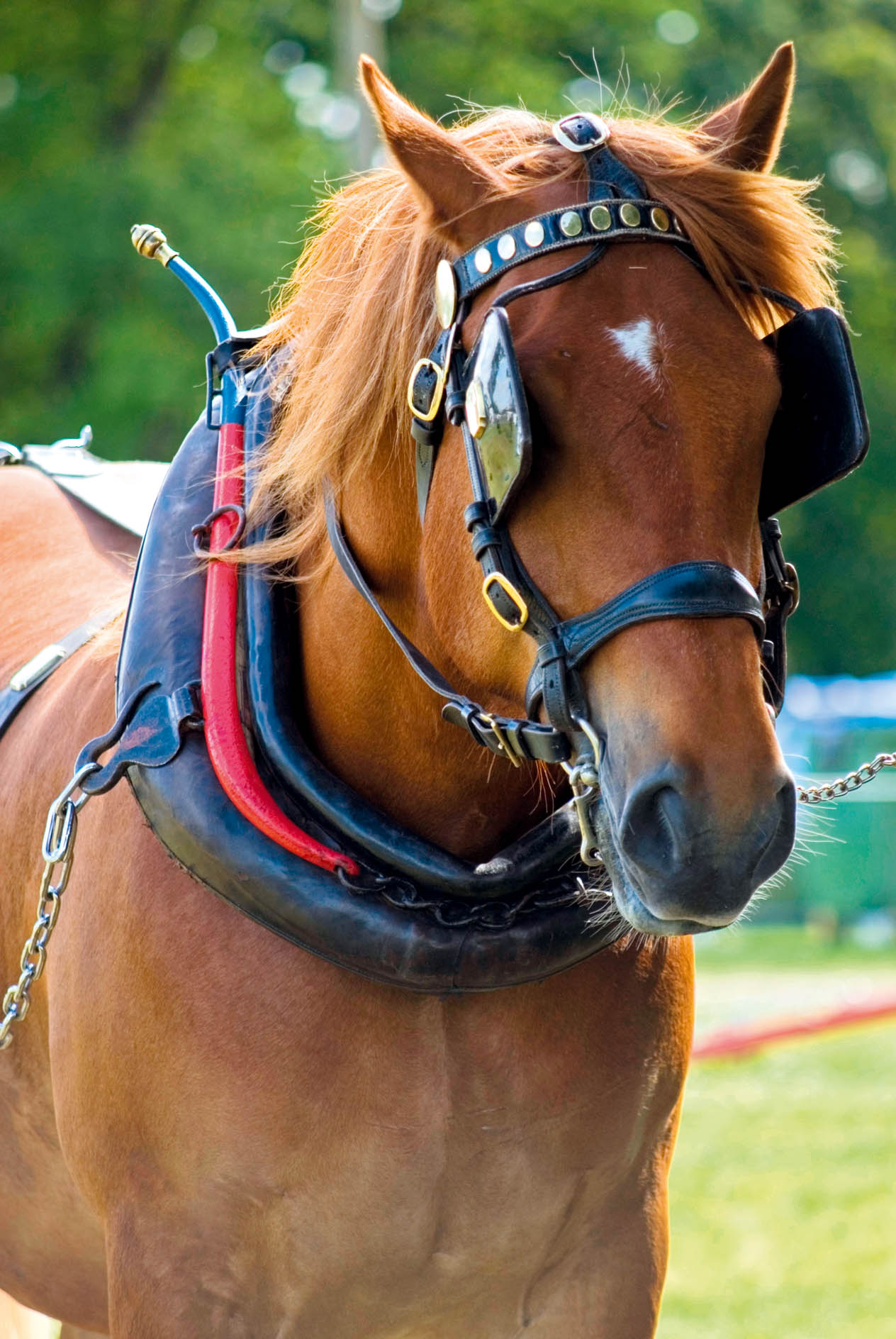
The society has come up with various initiatives to boost numbers (of both humans and horses), including a stallion premium scheme, breeding programmes, which have helped foal numbers to climb to 250–300 per year, and a heavy-horse camp, a popular May fixture for all heavy breeds and their owners that offers instruction in the likes of harness fitting and care, horse husbandry, ploughing, driving and riding.
In fact, riding Shires has now become a fashionable pastime, as Jade Stock, a financial adviser can confirm. Twelve years ago, she was given a two-year-old pure Shire called Trem y Wydaffa Bryn by her husband as a wedding present. ‘I broke in Bryn with the help of an instructor and he was as easy as pie,’ remembers Mrs Stock, who went on to hack and show her bay mount, although he is now used by the Riding for the Disabled Association at Holme Lacy Equestrian Centre, Herefordshire, where he stays most of the time, returning to his owner’s smallholding for holidays. ‘He’s a gentle giant, but he has to be carefully managed. He doesn’t know his own size and he goes through fences regularly; he needs a lot of food and has to be fed first or he bangs his door and damages things; and he also has soft feet. A set of shoes costs me £250.’
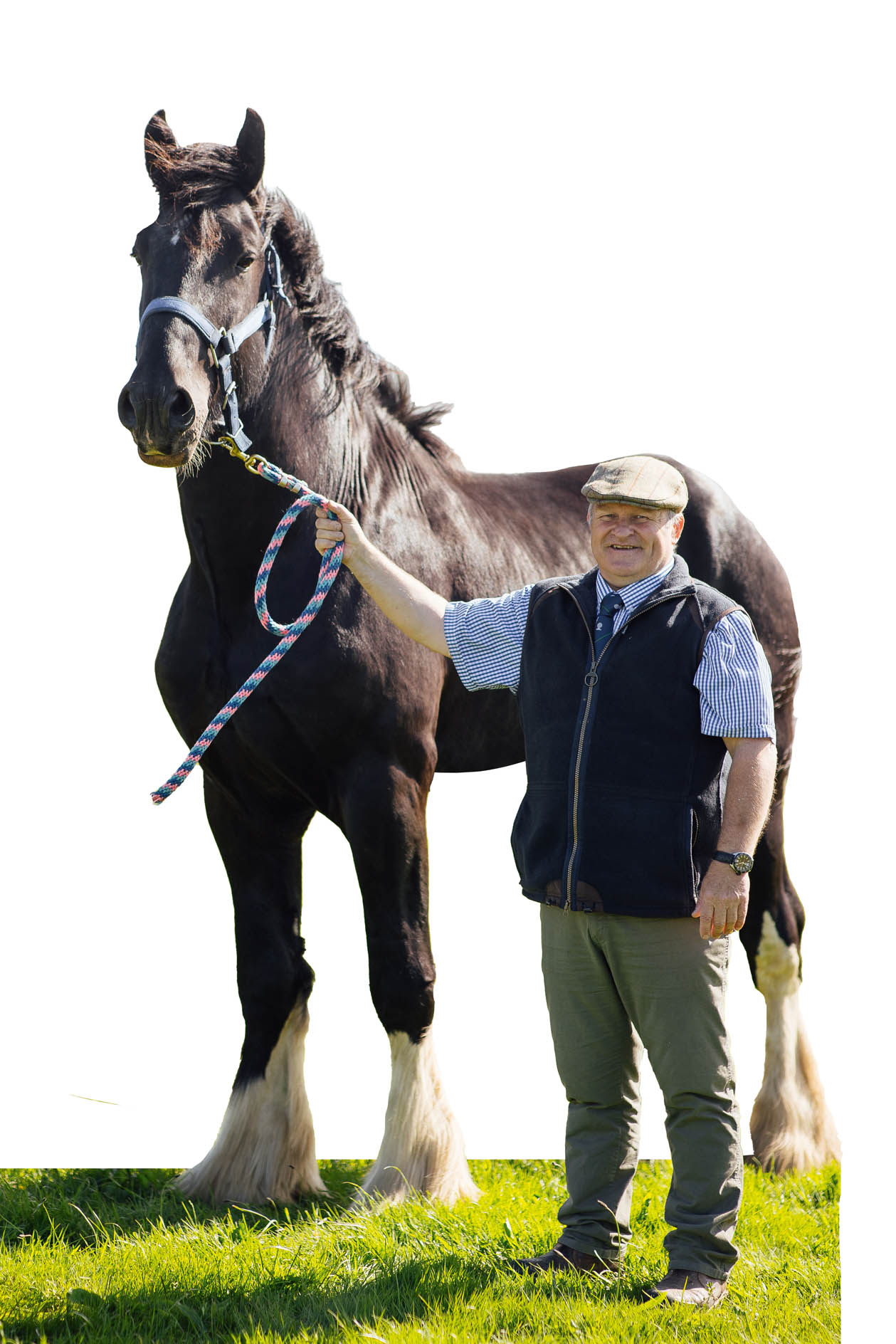
Back in Richmond Park, Joey and William have finished bracken bashing for the day and are now tied up outside their Holly Lodge stables, munching on haynets. Mr MacDowell removes their heavy harness, with assistance from Dennis, a 17-year-old refugee from Ukraine whose father and older brother have been conscripted into the army to fight in the war. ‘Dennis sends all of his earnings to his family back home,’ reveals Prof Liefooghe. ‘In Ukraine, he worked at a stables and so he loves this job. He’s an example of the hardworking young people we’re keen to encourage to work with Shire horses.’
The heavy horse in the modern world
The fact that the Shire and the Clydesdale are both in the ‘At Risk’ category of the Rare Breeds Survival Trust (RBST) 2022–23 watchlist and that the even rarer Suffolk Punch is listed as a ‘Priority’ breed, is testament to the struggle for survival these heavy horses have endured since mechanisation transformed Britain’s landscape.
Fortunately, however, the popularity of these breeds, as well as that of the British Percheron, is now in the ascendant once again — not only for their work ethic on farms, in market gardens and in parks and public areas, but also for their usually calm and dependable temperament when under saddle.
Mirroring this upsurge has been a hike in ridden showing classes for these more sturdy equines. Equally, they prove popular between the shafts and are used for a variety of driving activities, from pulling drays to taking brides to weddings. With all these jobs for the taking, the future for Britain’s heavy horses seems brighter than it has for decades. For more information about the RBST, visit www.rbst.org.uk
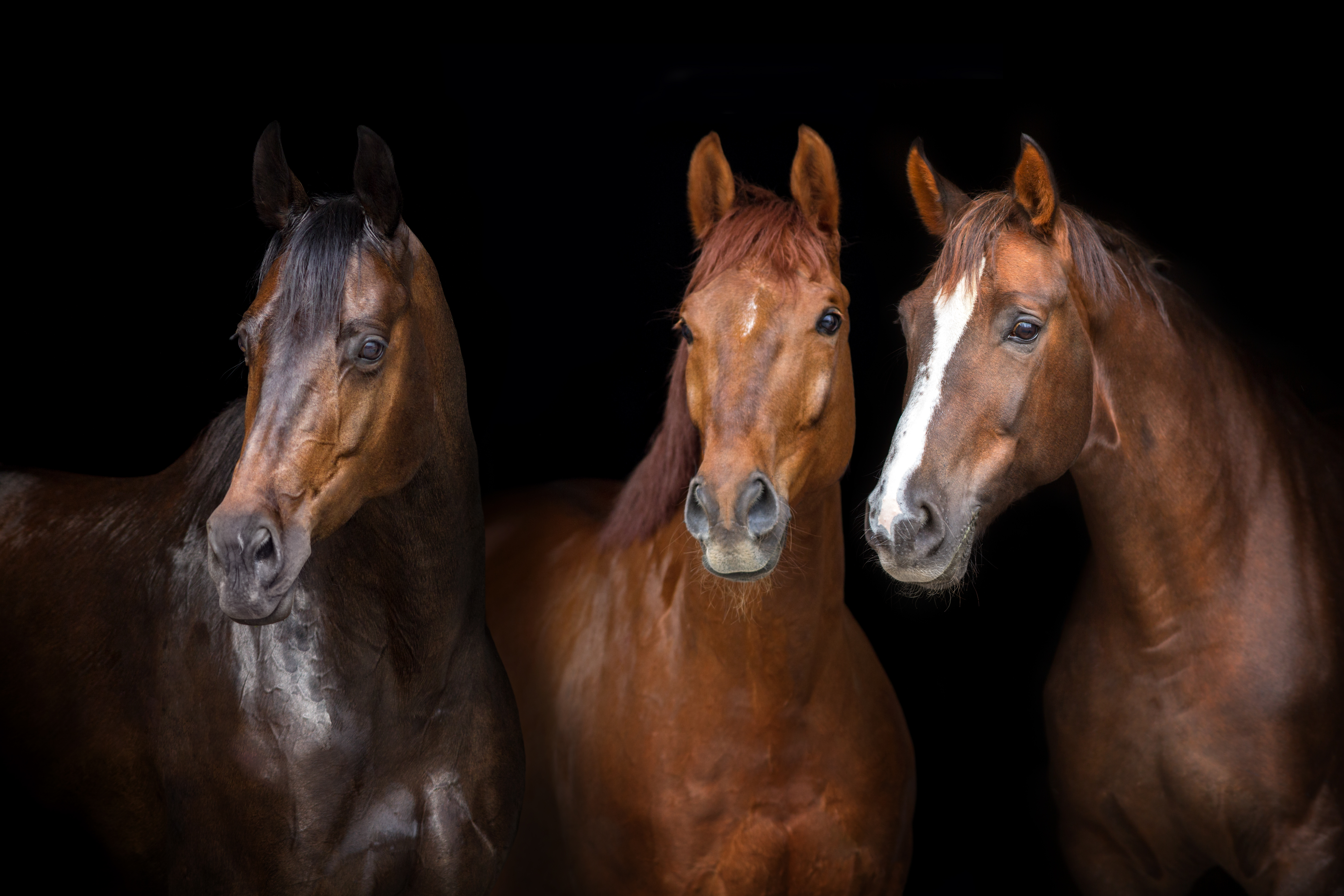
Credit: Getty Images/iStockphoto
Why we love horses: The 40,000 year story of people and their steeds
Equus caballus has served us for millennia on the land, the battlefield and in the sporting arena, so it’s no
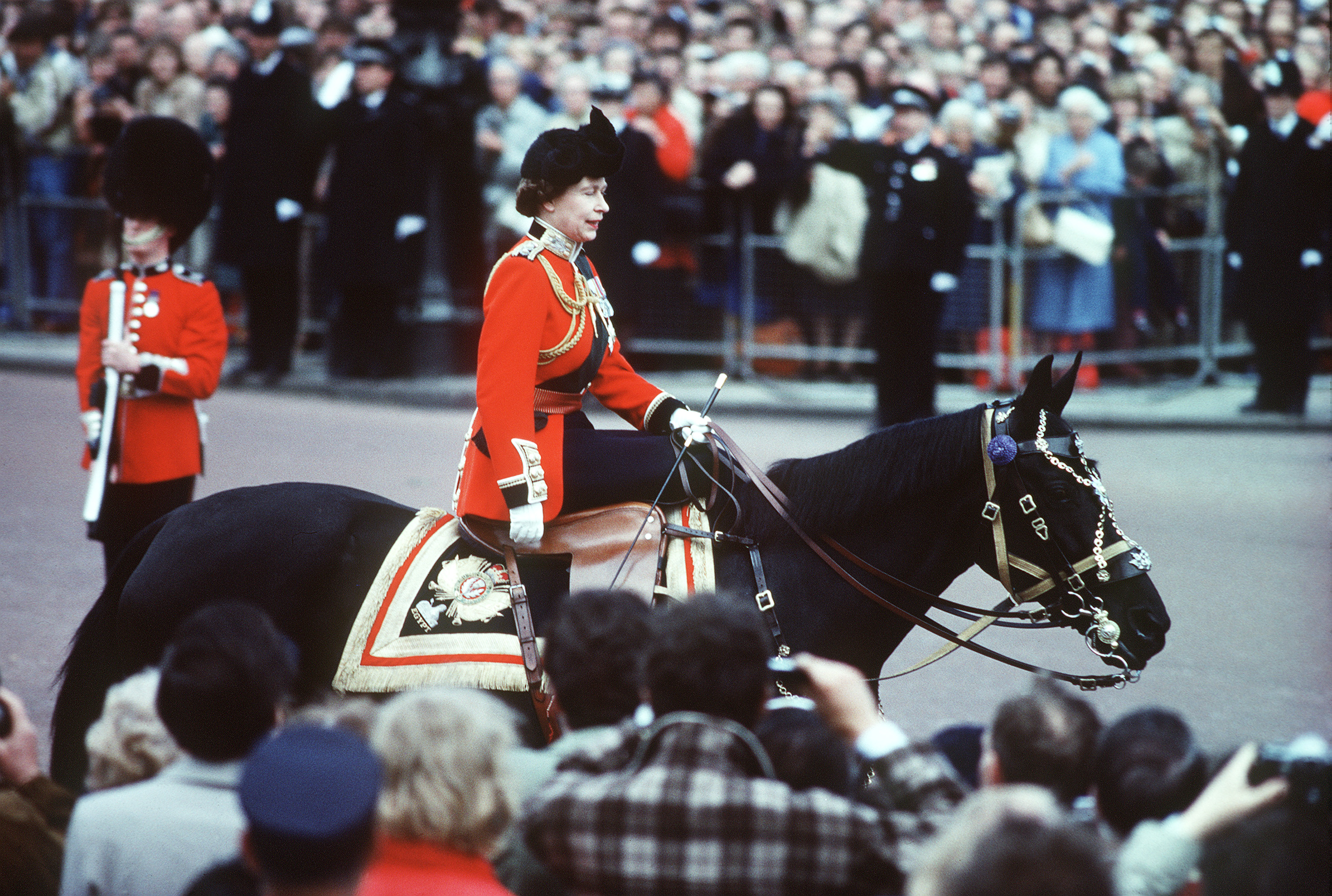
50 greatest horses of all time
In praise of brilliant horses.
Julie Harding is Country Life’s news and property editor. She is a former editor of Your Horse, Country Smallholding and Eventing, a sister title to Horse & Hound, which she ran for 11 years. Julie has a master’s degree in English and she grew up on a working Somerset dairy farm and in a Grade II*-listed farmhouse, both of which imbued her with a love of farming, the countryside and historic buildings. She returned to her Somerset roots 18 years ago after a stint in the ‘big smoke’ (ie, the south east) and she now keeps a raft of animals, which her long-suffering (and heroic) husband, Andrew, and four children, help to look after to varying degrees.
-
 In search of London’s earliest pint
In search of London’s earliest pintEarly houses — pubs open in the early hours to feed and water the market trade — have been a cornerstone of London for centuries. Yet, as Will Hosie finds, they aren’t stuck in the past.
-
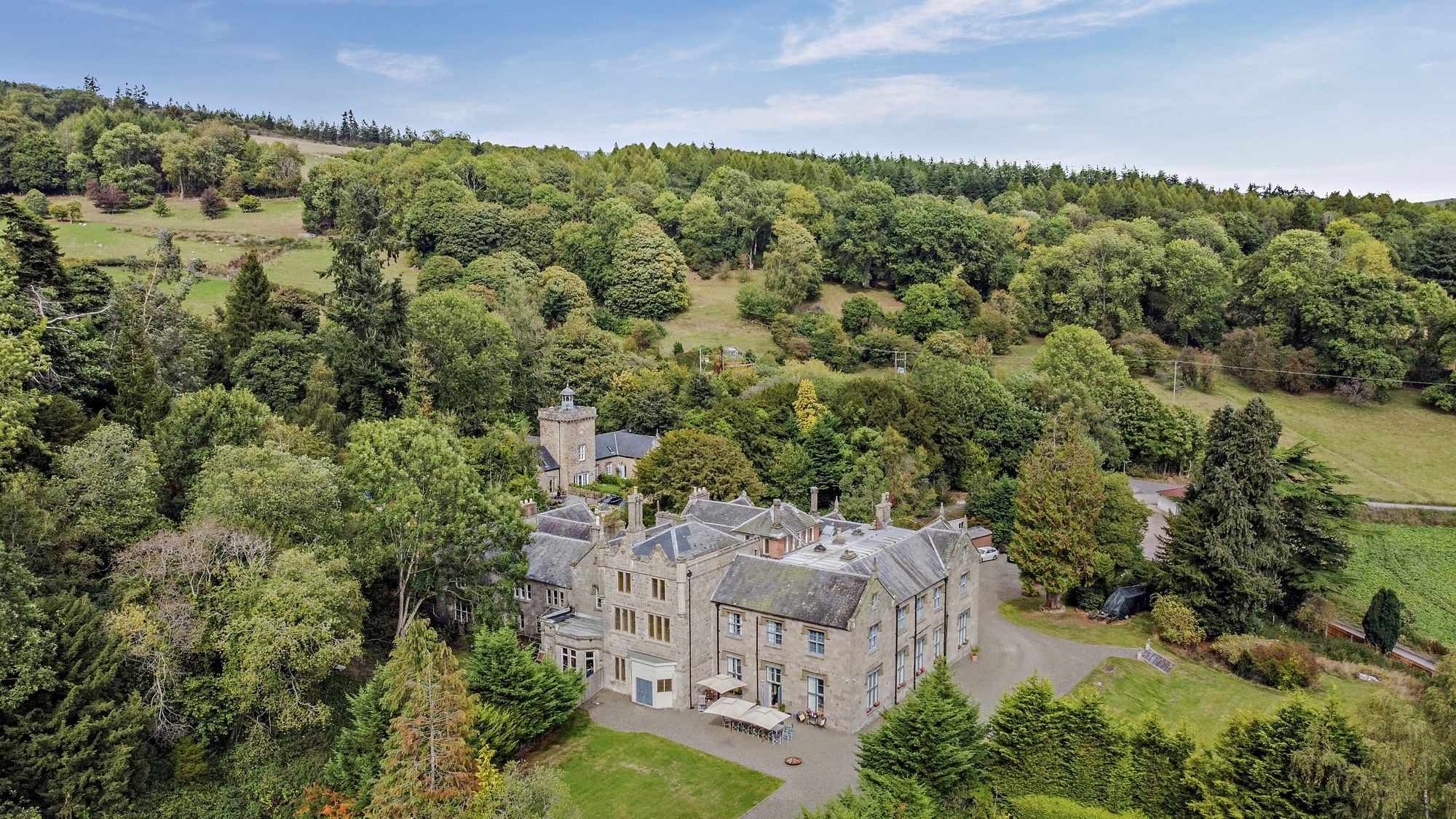 A 14-bedroom 'miniature Downton Abbey' to call your own — and there's not a penny of Mansion Tax to be paid
A 14-bedroom 'miniature Downton Abbey' to call your own — and there's not a penny of Mansion Tax to be paidNorton Manor is an incredible period home that's on the market for £1.3 million.
